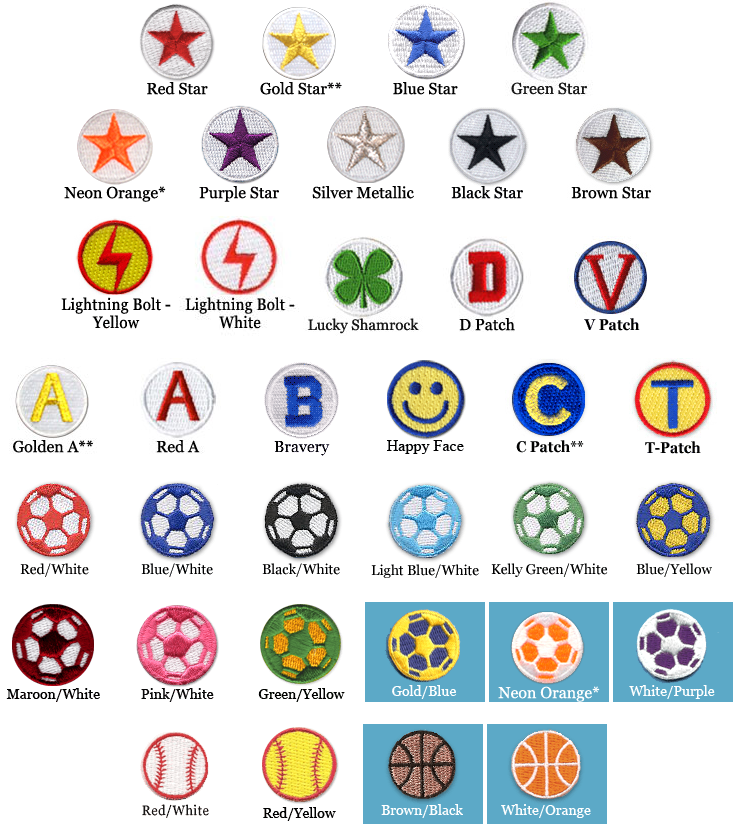The links below as an example of the internal links that make SoccerHelp Premium easy to use. Premium has 1,500 pages, 5,000 links and 70 exclusive SoccerHelp Practice Games. Click here for Premium Pricing and Subscription Options View a Copy of the Premium Home Page
K
Keeper Soccer - Short for Goalkeeper. See Goalkeeper. Soccer Keeper
Kick & Run Soccer - A derogatory soccer term applying to youth soccer where a player kicks the ball & then everyone runs toward the ball & there is little passing or ball control. "Kick & Run" has a different meaning from "Boom Ball". Kick & Run is obviously a style of play that you do not want to teach and that is not used by good teams, whereas "Boom Ball" is used by some excellent teams as a tactic. (See "Boom Ball"). Soccer Kick & Run
Kick-Off Soccer - Just before the start of the game, the referee will call for the Captains of each team to come onto the field. The referee will then toss a coin to decide which team kicks off first and which goal each team will attack during the first half of the game. The winner of the toss gets to choose which goal it will attack and the other team takes the kick-off. The teams will then take the field and referee will ask if they're ready to start the match, and will signal for play to start, at which time the kick-off will occur. To start the second half, the team that won the toss takes the kick-off and the teams attack the opposite goal (so they switch sides of the field). Each time a goal is scored, the team that didn't score gets to kick off. At each kick off, the ball is placed in the center of the "Center Mark" (on the half-way line) & both teams must be on their own half of the field & the receiving team must stay outside the Center Circle until the ball is "kicked". Moving the ball any constitutes a "kick off", even if it only goes an inch. However, the ball must move forward on the "kick off". The "kicker" may not touch the ball again until someone else (on either team) has touched it. However, the "kicker" may put his foot on top of the ball & barely move it forward so a teammate standing nearby can dribble it or pass it backward or forward. Even though a goal may be scored on a direct kick off (i.e., another player is not required to touch it first), it is better to teach your players to control the ball on a kick off instead of just kicking it away. However, kicking it deep to the corner & rapidly "pushing up" to try to steal the ball back is a viable strategy that pro teams even use occasionally. Some coaches teach passing the ball backward on kick off (after it has been touched by the kicker). Before you try this, see Tip No. 7, "Steal Their Kick-Off", in Premium "41 Tips, Tactics & Strategies." Don't spend a lot of time teaching fancy kick-offs; there are so few in a game that it's not worth it. For all Rec teams we recommend just lining up and kicking it deep to the corner so your Forwards and Midfielder's can push up and try to win the ball back. If you want, you can "overload" to the side you're kicking to, but you must be careful because that will pull your players out of position. But you can safely move the players on the "weak" side (which is the side you aren't kicking to) toward the center, which will prevent your opponent from easily driving through the center to your goal, put your players in a good position to win cleared balls and put your players in a good supporting position in case your team gets the ball on a turn over. Rec teams are more likely to score on a turn over (i.e., a mistake by the opponent) than on an attack starting with a kick-off. This kick-off has the advantages of being easy to teach and of moving the ball away from your goal so you avoid the possibility of turning over the ball in the midfield and giving your opponent the chance to score an easy goal on a quick "counterattack". Our experience is that it isn't worth Recreational teams spending much time practicing kick-offs (there aren't many kick-offs and there are many more important things to practice). Kicking the ball to the corner is a good strategy and you avoid the risk of turning over the ball and giving up an easy goal. In fact, many high school teams are now using this kick-off and most of the teams in the 2003 Women's World Cup used it. According to an article in the July 2004 issue of Soccer Journal, in the 2003 Women's World Cup almost all the teams had a kick-off designed to gain territory. Teams generally overloaded one side and drove the ball towards that side. Soccer Positions Basics & Kick-Offs Soccer Kick-Off
Kick-Offs Navigation PageKill The Ball Soccer - Using the foot to stop the ball "dead". Soccer Kill The Ball
Killer Ball Soccer - A pass that is so good that it sets up a goal. Usually a "through ball", a "long ball", a "give & go" or a soft "pass to space". Soccer Killer Ball
Knute Rockne Quotes Soccer - Motivating quotes for soccer coaches. Soccer Knute Rockne Quotes
L
Laces * - (aka "Instep"). Refers to the top of the foot where the shoelaces are. A front volley in soccer would be struck "with the laces". Long shots, long passes & power kicks are also struck with the laces. (See "Lofted Drive"). Soccer Laces
Last Defender - The defender (not counting the goalkeeper) who is closest to the goal you are attacking. (The goalkeeper is usually the actual last defender, but it is easier to teach this concept by referring to the last field player as the "Last Defender").This is an important concept to teach because you may want your center forward to play within 2 steps of the Last Defender. The "Last Defender" is usually as far as a forward can "push up" without the ball & still be "onside". You want your forwards to stay 2 steps behind the last Defender so they won't be as likely to be called offside. It is hard to dribble past the Last Defenders. The best way to break through them is by "through balls", "give & go's" or "passing to yourself". (See "Offside Rule", "Push Up", "Through Ball", "Pass To Yourself" & "Pass To Space"). Soccer Last Defender
Late Tackle - A tackle (usually a slide tackle) that makes contact with the ballhandler just after he has played the ball. (See "Played"). Soccer Late Tackle
Laws Of The Game - The official soccer rules are called the "Laws of the Game" and are published annually by FIFA. (Go to "Laws of the Game" at www.fifa.com for more information and a complete list of the latest rules. Rules may be modified for women, players with disabilities and for players under 16 and over 35 years of age. See "Rules" herein and "Field Size"). Soccer Laws Of The Game
LDMF - Left Defensive Midfielder. (See "Formations"). Left is as you face the other team's goal. Soccer LDMF
Leading Pass * - A pass into open space that "leads" the receiver (i.e., is played to space in front of the receiver). (See "Through Ball", which is a similar concepts and "Pass to Space"). Soccer Leading Pass
LF - Left Forward. Left is as you face the other team's goal. (See "Positions" and "Forwards"). Soccer Left Forward
LFB - Left Fullback. (See "Positions" and "Fullbacks"). Soccer Left Fullback
Libero - The Italian term for "free player". Usually refers to the "Sweeper", but also can refer to a star player who is allowed to roam and play in the rear or front as he sees fit. (See "Sweeper"). Soccer Libero
Lifted Ball - An "Air Ball". Soccer Lifted Ball
Line Of The Ball - Path of the ball. Soccer Line Of The Ball
- a. The general rule is that the lines on the field are part of the area they define & as long as any part of the ball is on the line it is considered to be within the area.
- b. The ball must totally cross the side line or end line to be out-of-bounds.
- c. The ball must totally cross the imaginary plane of the goal line (inside the goal of course) in order for a goal to be scored.
- d. The thrower on a throw-in may step on the side line & is only considered to have crossed the line if one or both feet entirely cross the line. (This seems to contradict the other rule, but it is true).
- e. On a goal kick, corner kick or kick off, the ball may be placed on the line. (It is considered to be on the line if any part of it is touching the line).
Soccer Lines
- f. On the kick off, a player may be standing on the line.
Linesman - What the Assistant Referees used to be called. Soccer Linesman
Linkmen - (aka Midfielders). See "Midfielders". Soccer Linkmen
LMF - Left Midfielder. Left is as you face the other team's goal. (See "Positions" and "Midfielder"). Soccer Left Midfielder
Lofted Drive - A pass or shot that is made by striking the lower part of the ball with the inside or outside of the foot near the laces, or with the top of the foot, so the ball rises into the air (i.e., so it is "lofted"). It is a "drive" because there is a full follow-thru. A good analogy is a drive in golf; here you are going for distance. This is different from a "chip" which is struck with a downward, jabbing motion & little follow-through. A drive is more powerful than a chip & at older ages is more likely to score from long distance. In youth leagues, however, where there is a short goalkeeper in a tall goal, a chip can be very effective. (See "Drive", "Chip", "Hopped Pass" & "Air Ball"). Soccer Lofted Drive
Lofted Pass - See Lofted Drive. Soccer Lofted Pass
LOMF - Left Offensive Midfielder. Left is as you face the other team's goal. (See "Formations"). Soccer Left Offensive Midfielder
Long Ball - A ball that is kicked "long". This usually refers to a long ball from the FB's to open space or to an air ball that is sent between the FB's & the goalkeeper. (e.g., "send a long ball"). (See "Through Ball", "Sweeper", "Over The Top", & "Push Up"). Soccer Long Ball
Long-Ball Style of Play - (aka Long Game or Direct Attack). A style of offensive play where the objective of the attacking team is to send "long balls" thru or over the defense which they hope their forwards will beat the defenders to. This style keeps pressure on the defense but it is much more effective if the attackers can also use short passes when near the other teams goal as a way to finish the attack. (See "Short Game", "Over The Top", & "Direct Attack"). Soccer Long-Ball Style of Play
Long Corner - A corner kick that is kicked to the front of the goal in hopes an attacker will kick or head it in, as opposed to a "short corner" which is passed in. A Long Corner is a type of "Cross" to "Center The Ball". (See "Short Corner"). Soccer Long Corner
Lou Holtz Quotes - Motivational quotes for soccer coaching. Soccer Lou Holtz Quotes
See prices for our iron on Motivational Soccer Patches

Copyright 1999-2024, David and Kay Huddleston
+David Huddleston
